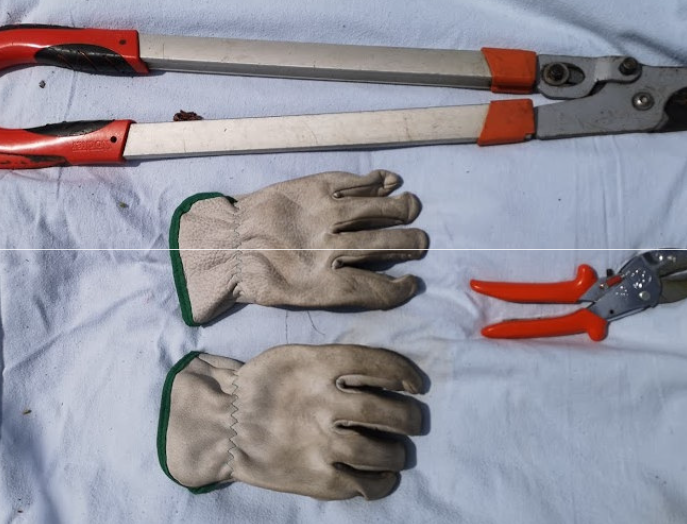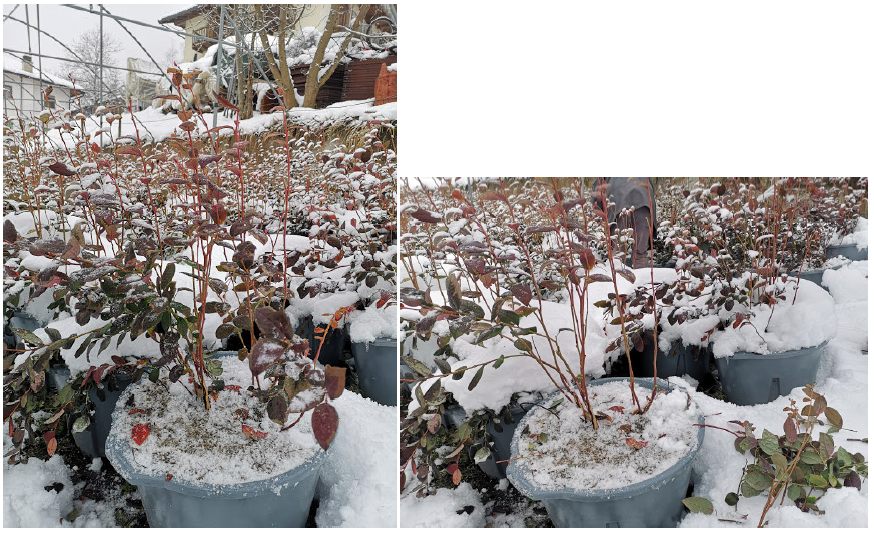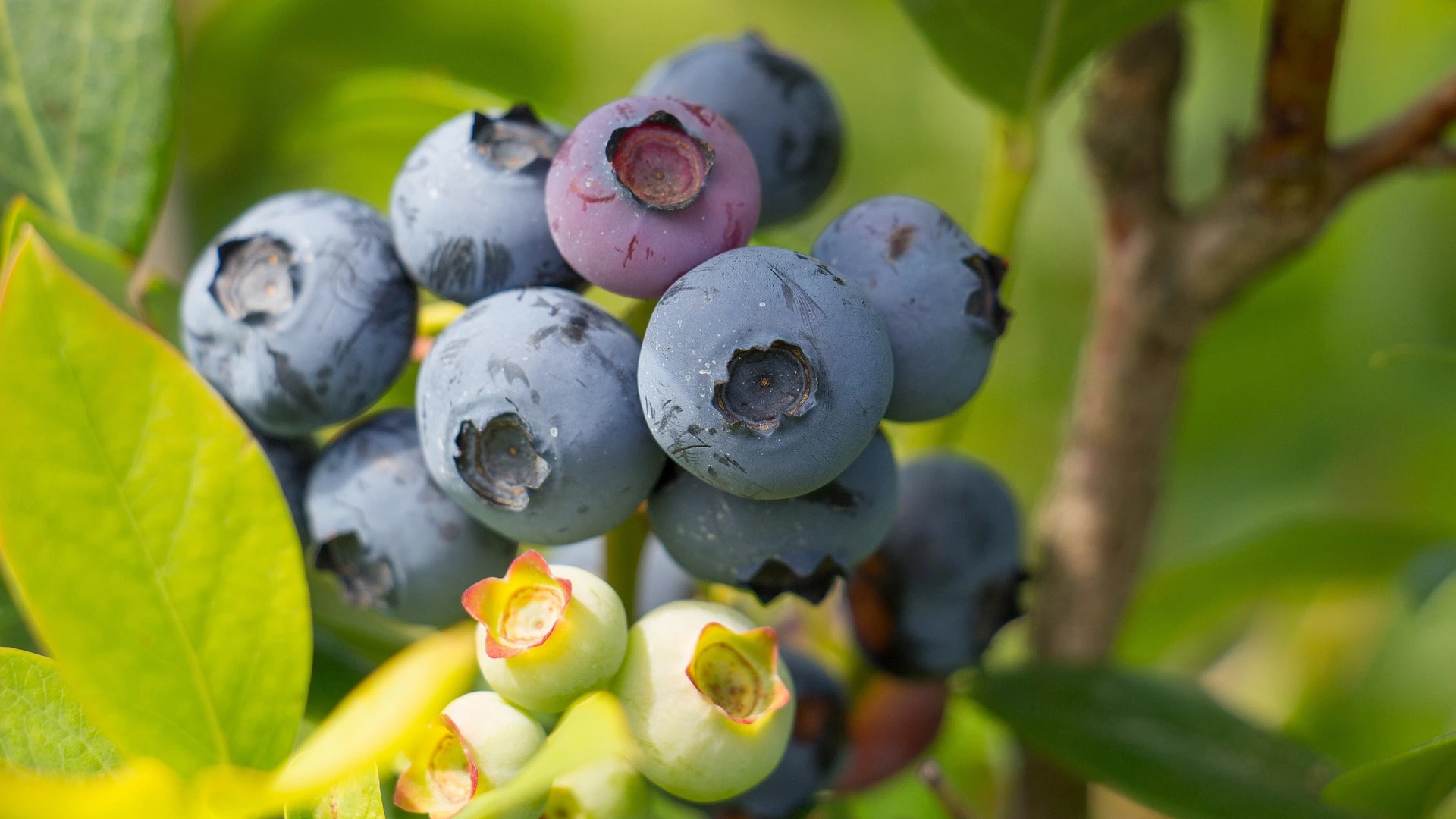Pruning is a fundamentally important operation to maximise the quality and economic outcome of any giant blueberry (Vaccinium corymbosum) plant.
Italian Berry asked Andrea Pergher, technical manager of Fall Creek, to explain the secrets of effective pruning to growers. Fall Creek is the world's largest producer of blueberry plants and Andrea Pergher has a long experience in the field in production areas ranging all over Italy from Trentino to Sicily and in other parts of Europe (from Scotland to Eastern countries).
Summary
PRUNING THE BLUEBERRY
Pruning for blueberry should be carried out every year, starting with breeding pruning for the first 2-3 years and then moving on to production pruning for all the following years, which for a well-tended plant can be 15-20 years. Without proper pruning, the blueberry plant grows a lot, both in height and in size, and tends to produce many but small fruits, in order to follow the plant's natural inclination to maximise the number of seeds produced and spread throughout the environment.
Andrea Pergher summarises the reasons for pruning blueberry as follows:
- promote the growth of young wood, which produces better quality fruit
- maintain an open plant layout, which improves air circulation, opens the centre of the plant to sunlight and reduces disease;
- maintain productivity by encouraging the growth of new fruit bearing branches;
- remove dead or damaged branches;
- clean the lower part of the plant by removing weak or clumped branches;
- increase fruit quality because the shrub is in the right balance between flower buds and vegetative buds;
- select branches and suckers so as to optimise production;
- make the fruit more accessible and reduce harvesting costs.
Pruning blueberry requires a bit of "flair," meaning that during pruning rather than following a precise method, as is done with blackberries or currants, one will have to prune in a "creative" way having in mind the general criteria and goal of pruning.
The final aim of pruning is to have a correctly shaped plant with the best balance of branches and suckers.
The cost of pruning varies between Eur 0.05/kg and Eur 0.15/kg.
PRUNING TOOLS
Pruning must be carried out with clean tools so as not to encourage the spread of virosis or bacteriosis from one plant to another. It is advisable to disinfect the tools regularly, at least every few plants.

After pruning, the plants are disinfected using copper to heal wounds.
PRUNING TECHNIQUES
The pruning technique varies according to the type of plant (Northern Highbush or Southern Highbush) and the climate zone in which production takes place.
RECOGNISE THE DIFFERENT PARTS OF A PLANT OF BLUEBERRIES
To prune correctly, it is first necessary to learn to recognise the different parts of the blueberry plant: the flower buds, the fruit buds, the one-year-old central suckers, the one-year-old side branches, the two-year-old side branches, the branches, the old wood.
Flower buds and vegetative buds

One-year central pollons

These are one-year-old suckers, 50 cm to 100 cm long. One to two suckers should be left per year for proper pruning. One-year-old suckers can produce small amounts of fruit at the ends and develop lateral branches in subsequent years. Good pruning encourages good development for future production.
One-year side branches

Side branches of 20-30cm length are best for high quality production. Leave 3 to 6 flower buds at the end and 3 to 6 vegetative buds at the base so as to have the best balance between fruit and leaves.
Two-year-old side branches
Side shoots in the second year are best. Leave no more than 5-6 side branches per sucker to avoid overproduction. Leave 25-30 flower buds, which will produce 200 to 240 flowers, equivalent to 400-500 grams of fruit. Prune the end and remove old wood and excess laterals.
Old wood (> 3 years)

Wood that is 3 years old has low vigour, many flower buds and few vegetative buds. It is very important to remove old wood that has an imbalance between flower buds and vegetative buds and produces blueberries of poor quality.
PRUNING BLUEBERRY NORTHERN HIGHBUSH
All varieties of blueberry that are planted in Northern Italy belong to the Northern Highbush type: for example Duke, Draper, Aurora, Bluecrop, Cargo, Elliott, Last Call, Liberty, Top Shelf.
WHEN TO PRUNE
In winter all producers of blueberries Northern Highbush have to prune their plants. Pruning is done in the winter period during the phenological dormancy phase of the plant.
PRUNING TECHNIQUE FOR BLUEBERRY NORTHERN HIGHBUSH
The blueberry Northern Highbush has an open bush system, not an espalier system. Selective pruning is carried out every year for blueberry of the Northern Highbush type. This type needs 3-5 years to reach full production.
Breeding pruning is carried out inyear 1 to set up and strengthen the plant. All flower buds are removed (cut off 5-10 cm at the ends) and the 2-3 strongest suckers are kept. Start by giving the plant its correct adult shape, with the branches arranged in an orderly circumference. Remove crooked suckers and suckers that cross the plant, all the lower wood and the less vigorous wood. In this way the plant will not produce but will be well set up for the following years.

Controlled pruning is carried out inyear 2. Remove all lower wood and less vigorous wood. Leave 1 to 3 suckers. Remove some of the productive wood in order to have a balanced growth. The plant will start to produce 1-2 kg to 2-3 kg for well structured and better grown plants.

In subsequent years, pruning should be carried out on 20-30% of the wood. Only one to two suckers are left each year and all other suckers are removed. The oldest productive branches (3 years old) are cut so that a total of 5/6 old and 5/6 new productive branches are left to renew the plant.

This means that the plant will have about 8-10 productive branches in total. In this way the 5-6 year old branches are removed every year and the plant renews itself cyclically. In fact, the younger branches are more productive and produce blueberry of better quality.

Cutting back the old wood prevents it from growing too high; cutting back the plant, i.e. removing the tops, renews the plant and improves the quality of the fruit. Lowering the highest branches also encourages the growth of new suckers.
Attention must be paid to suckers, which can occur both at the base of the plant and along the branches. Particularly on branches that have produced a lot of fruit and that have bent during the production phase due to the weight of the fruit, suckers can grow up to 50-100 cm high on the branches.
The bush must then be cleaned from the inside to obtain an open, airy shape with the branches arranged as uniformly as possible around the circumference. Branches which grow too far inwards and excessively cross the bush are then removed.
| Year | Production g/plant | Branches | Sides |
| Year 1 | 0 | 2-3 | 0 |
| Year 2 | 1000 | 3-4 | 15-30 |
| Year 3 | 2000 | 4-5 | 30-50 |
| Year 4 | 3000 | 5-7 | 50-70 |
| Year 5 | 4000 | 6-8 | 65-80 |
| Year 6 | 5000 | 7-9 | 80-100 |
according to the following scheme:
- 1 side = 5 flower buds
- 1 bud per flower = 8 flowers
- 40 flowers = 80 grams
So with 5 laterals you will have a production of 400 g (25 flower buds, 200 flowers, 400 g). In a mature plant the expected production is 5-7 kg from 6-8 branches of different ages with 100 lateral branches.
PRUNING BLUEBERRY SOUTHERN HIGHBUSH
The Southern Highbush type blueberry is the one that is best suited to warmer climates. In Italy, the most common variety for this type is Ventura.
The pruning of this type of blueberry is carried out at a completely different time and in a completely different way to that of blueberry Northern Highbush.
In warmer climates (e.g. Sicily), pruning can be called complete renewal and is carried out immediately after the harvest. If pruning is carried out in June, the plant has about 6 months in which to continue growing and therefore an almost complete pruning of the plant can be carried out. In other words, all the old wood is cut off, making an almost complete pruning.

In Central Italy, on the other hand, the pruning model is mixed and both models can be implemented: an almost complete pruning in summer followed by a second control intervention at the end of winter.
This content has been developed with the technical support of:

All rights reserved









